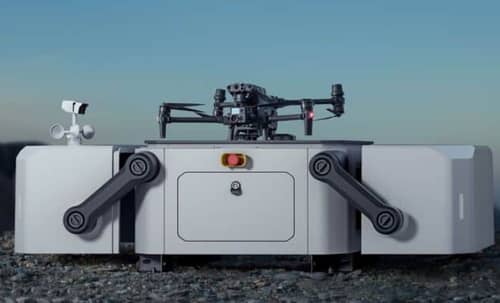 |
| DJI Matrice M30 flying in heavy rain |
Drone maker DJI has unveiled a new series of Matrice M30 business drones, a suite of desirable features in consumer drones.
The M30 series is available in two versions, the Matrix M30 and the Matrix M30T. The company describes this series as a new generation of commercial drones.
The Matrice M30 and Matrice M30T have a wind resistance of 15 meters per second and can fly in heavy rain and temperatures as low as -4 degrees Fahrenheit.
The Matrice M30 and Matrice M30T are not consumer drones. But this plane fits in a backpack. Like many other DJI drones, it integrates several high-performance sensors into a single camera assembly.
The drone also offers greater strength, durability and capability for rugged professional applications than typical consumer drones. Although the company says its size makes it ideal for easy portability and quick setup.
Matrice M30 models include a 48MP zoom camera with a 1/2-inch CMOS sensor with 5x optical zoom, 16x optical zoom and 200x digital zoom, and a 12MP wide-angle camera, and an 8K camera capable of capturing 4K photos and videos. Operating at 30 frames per second (FPS), the laser rangefinder can provide accurate coordinates for objects up to 1200 metres.
The Matrice M30T has an additional thermal radiation camera with a resolution of 640 x 512 pixels. DJI says the Matrice M30 is built to withstand harsh environments.
They can fly in extreme temperatures of -20 to 50 degrees Celsius (-4 to 122 degrees Fahrenheit), heavy rain, strong winds, high altitudes and sleet or snow.
It also has a flight camera that can be used in low-light conditions and a built-in backup system that consumer drones do not include. Equipped with an obstacle avoidance system (six sensors).
DJI introduces the Matrice M30 series of drones
In addition, it only needs three propellers to land successfully. It uses DJI's OcuSYnc 3 quad-antenna transmission system with LTE back-up support, allowing it to stay connected in challenging terrain and operating conditions.
According to DJI, unlike other commercial drones, the Matrice M30 features a compact, lightweight and foldable design that is easy to disassemble, store and transport.
It uses an isolated battery design, a TB30 self-heating battery that can withstand at least 400 charge cycles and provide 41 minutes of flight time.
It has a BS30 smart charging box, which can quickly charge the battery from 20% to 90% in 30 minutes. It also has a new self-locking system that folds up at the touch of a button. The company claims that this makes it the fastest and easiest of all the powerful DJI-class drones.
In addition to the charging case, DJI has the most advanced DJI Dock charging system. DJI Dock is the company's new solution for a fully automated and programmed flight.
According to DJI, this expands the horizons of automated tasks that can be monitored and monitored remotely. Once configured, a fully loaded aircraft can take off from the DJI dock, with automated missions scheduled anywhere within a 7-kilometre radius of FlightHub 2.
When the aircraft is finished, it returns to the DJI docking station and recharges automatically, with the battery's rapid charging and cooling system returning it to the air within 25 minutes.
DJI Docking Station is IP55 rated. Although the main internal components are IP67 rated, they are water and dust resistant even when opened.
The Matrice M30 comes with a DJI RC Plus controller, two TB30 batteries, a BS30 smart charging case, and a plane organizer. The DJI Dock is currently available separately in beta and will be available in the fourth quarter of 2022.
The Matrice M30 starts at $10,000 while the Matrice M30T starts at $14,000.
